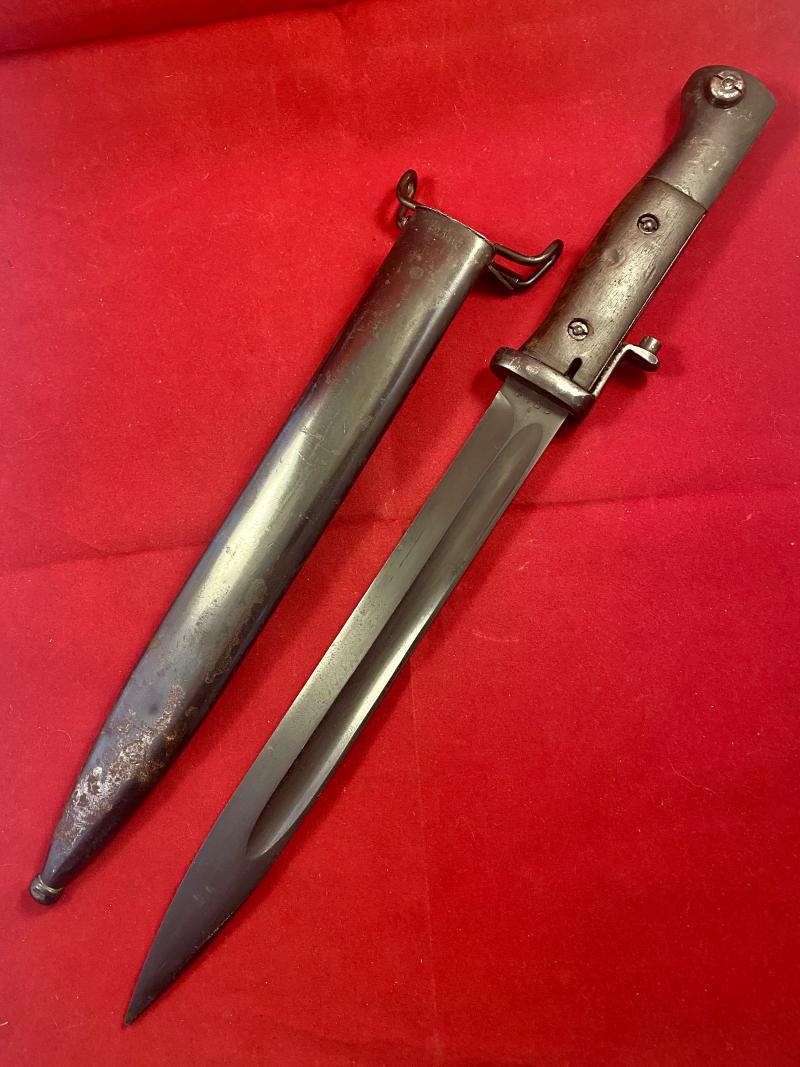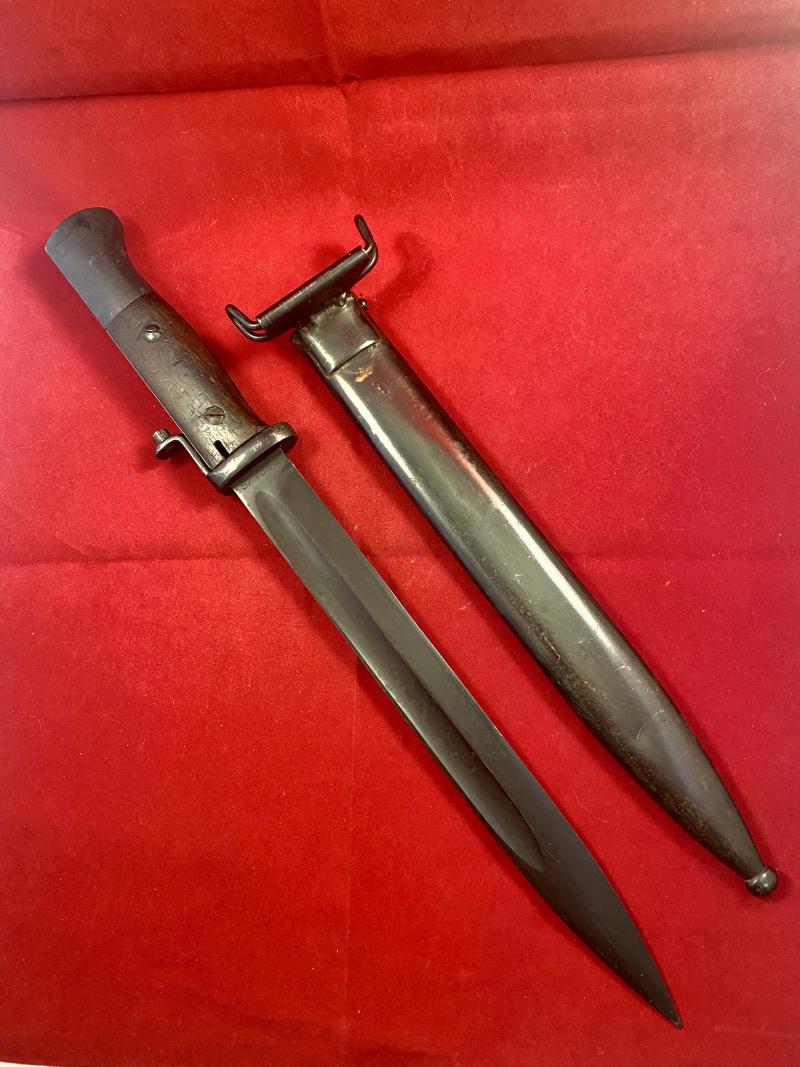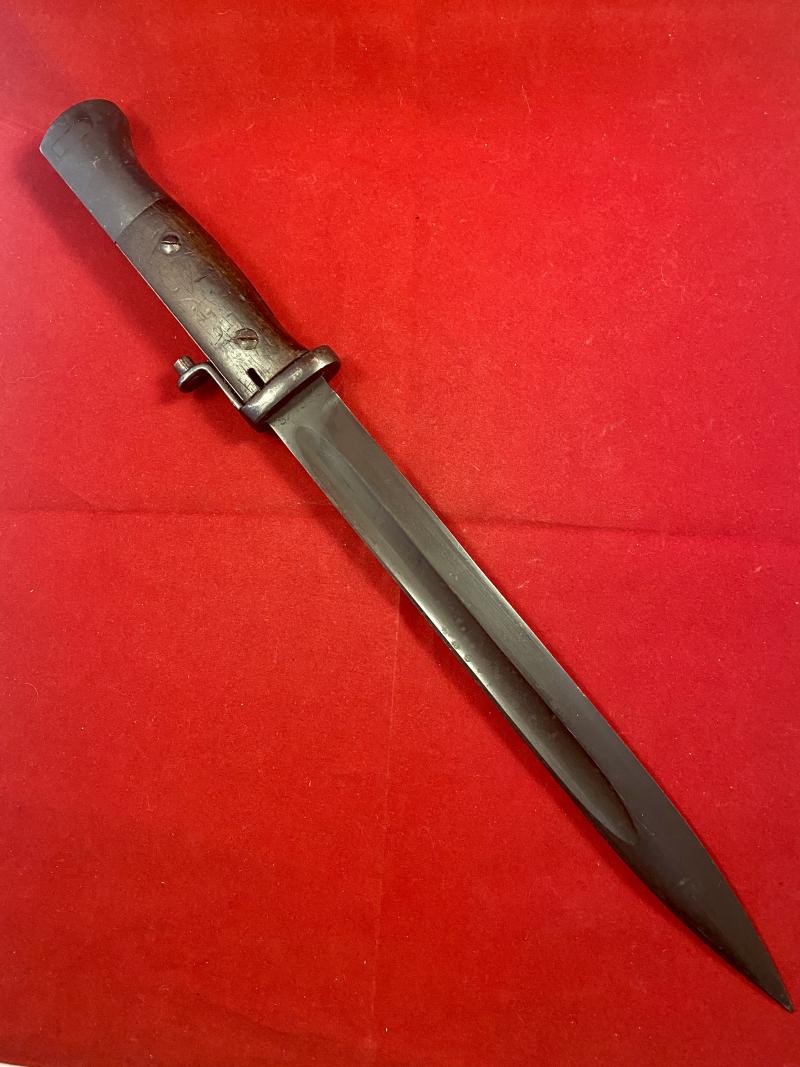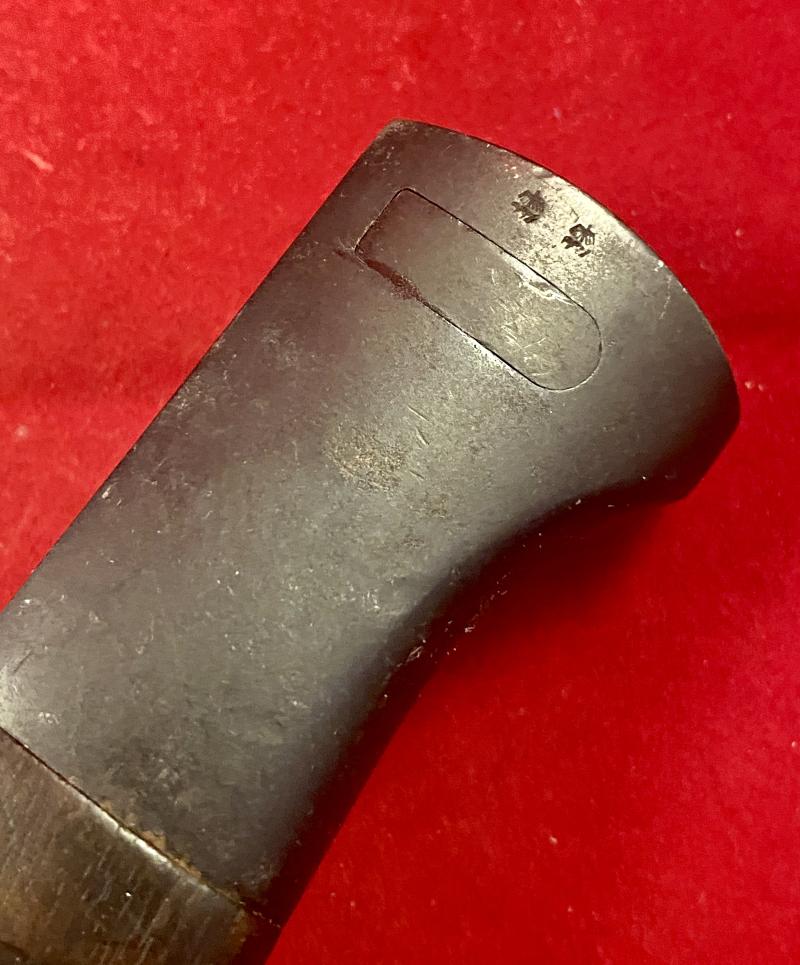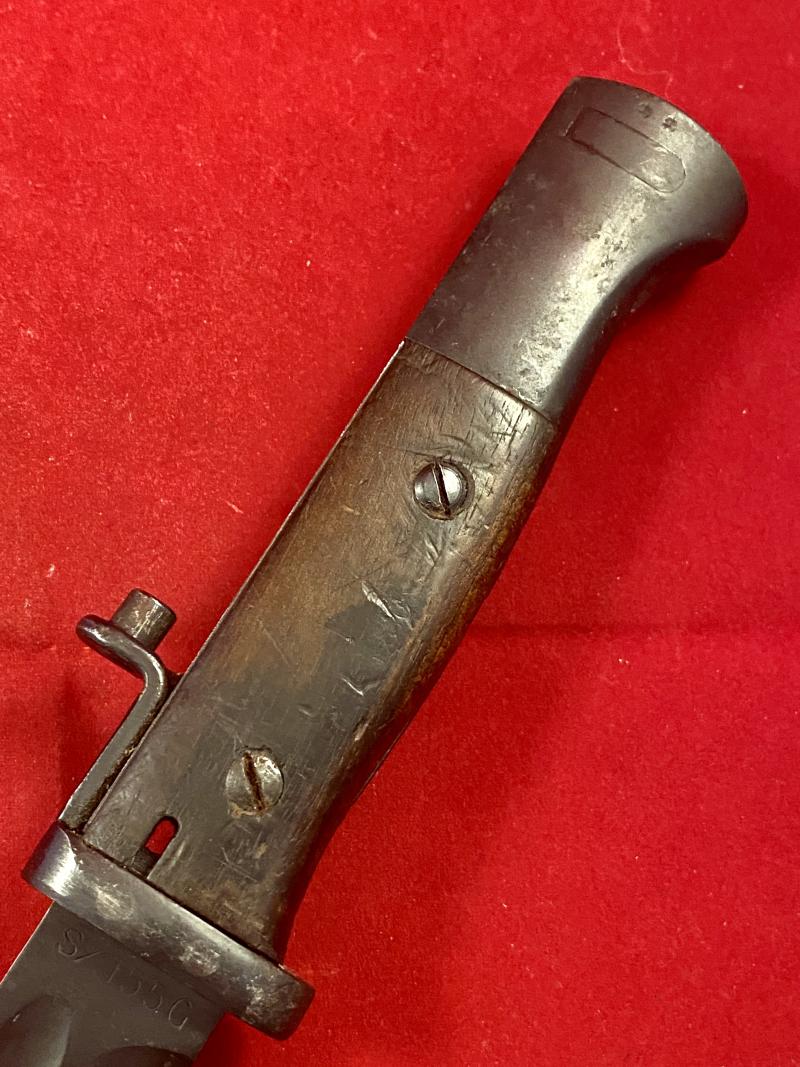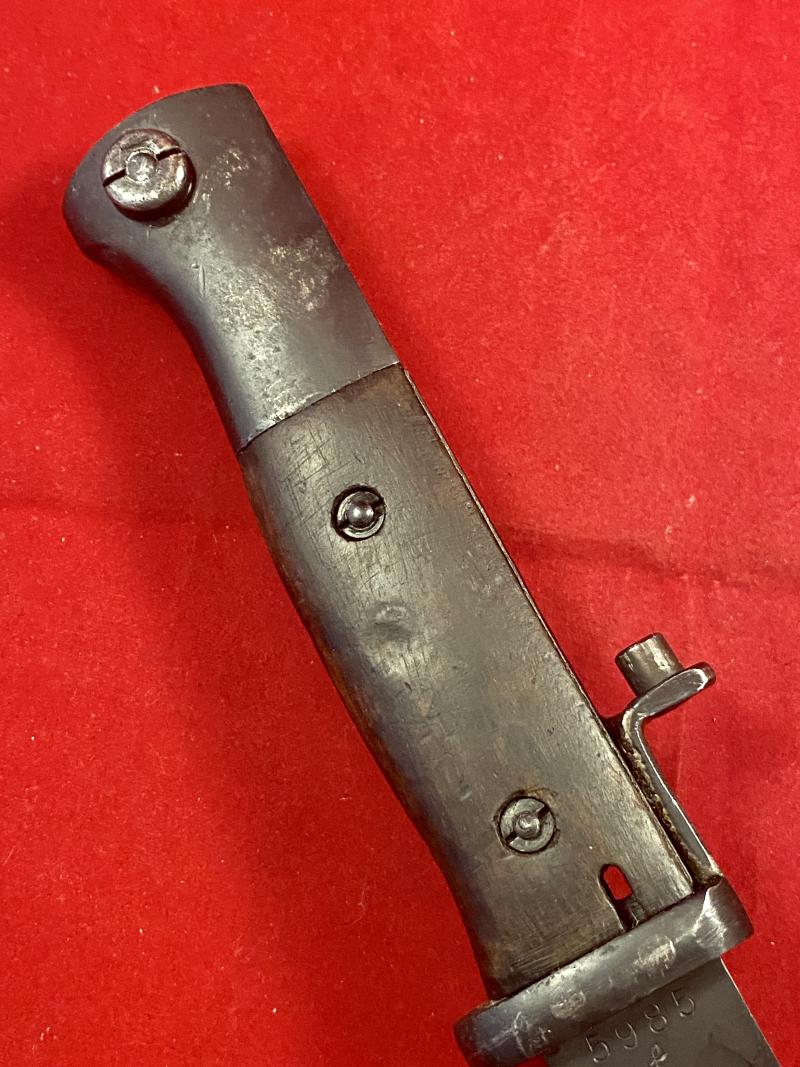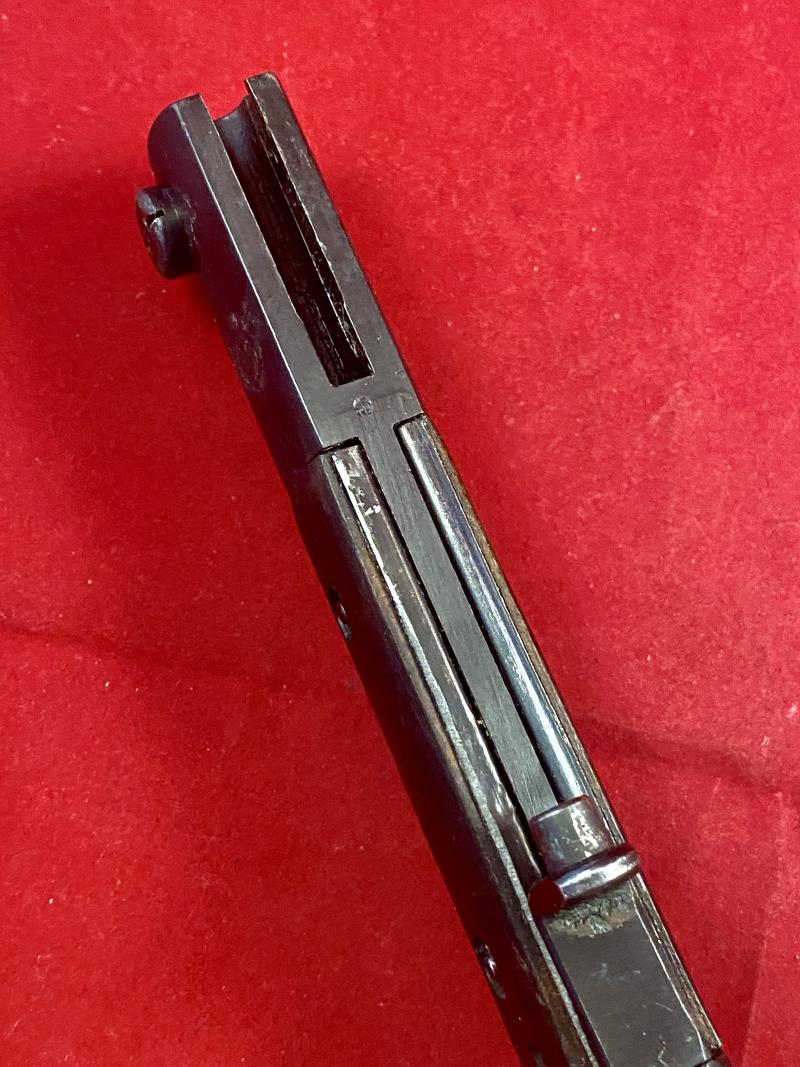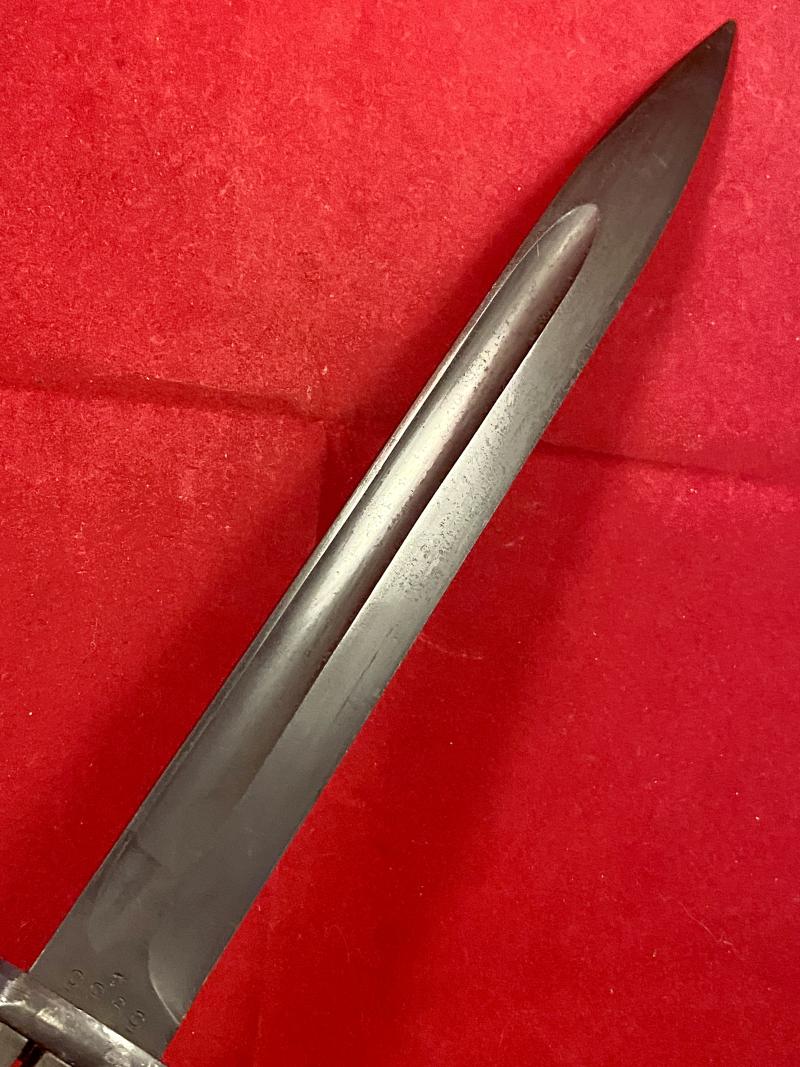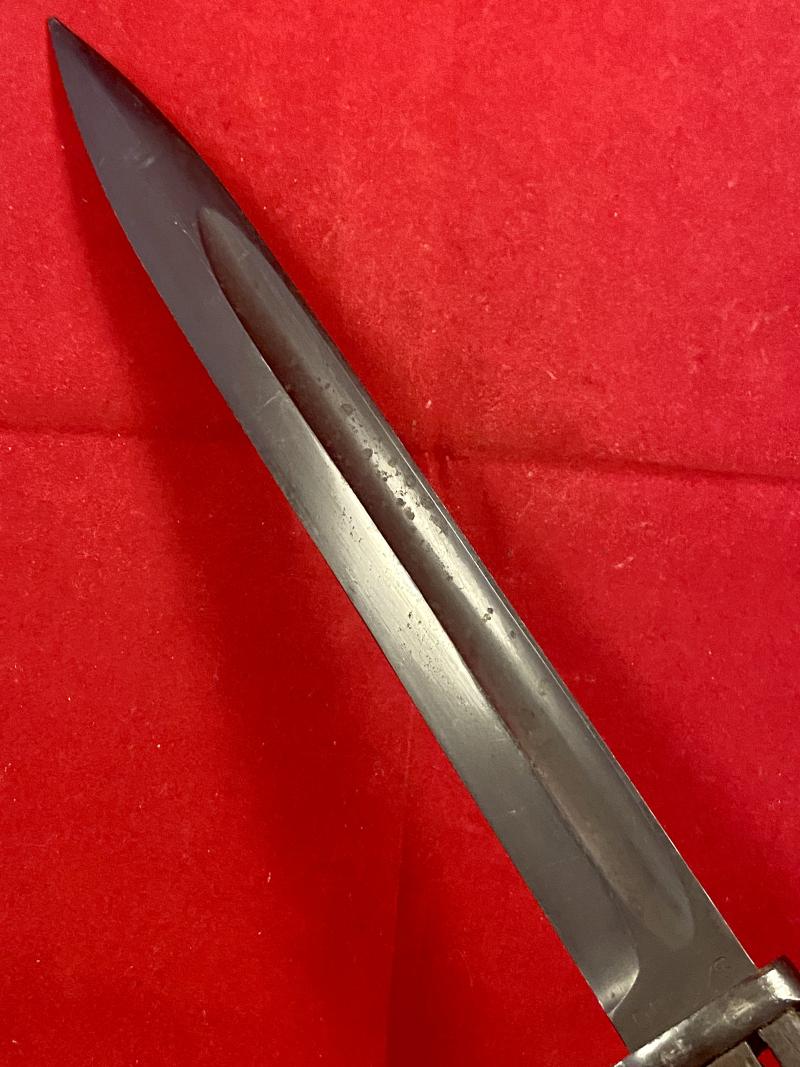Scarce Norwegian M1957/SLG Bayonet and Scabbard made from 1935 WW2 German K-98 III Bayonet and 1942 Scabbard
Here on offer is a scarce Norwegian M1957/SLG bayonet and scabbard.
This type of bayonet was made from captured WW2 German K-98 (M1884/98) III bayonets, to mount and use with the U.S. MI Garand rifle, in 1957.
At the end of WW2, Norway inherited a quantity of captured Kar 98k rifles and K-98 III bayonets from their German occupiers. When the USA provided Norway with M-1 Garand rifles, the Norwegians modified 5,000 K-98 III bayonets to mount to the M-1 rifle. Designated the M/1957 SLG (Selv Lessing Gevær or Self Loading Rifle), it is distinctive in having an adapter brazed to the crosspiece that fits into the Garand rifle's gas plug (similar to the USM-5 bayonet). The scabbard was also modified with a wire bet hanger, to attach to the U.S.-style web equipment belt.
All the hilt fittings have blued finish with just some light surface rust pitting.
The pommel has a cloverleaf-shaped rifle groove and a working bayonet catch, with a split-nut locking knob, that seems to be stamped with a Waffenamt inspection stamp, that I can’t make out.
On the reverse at the top it has two Waffenamt inspection stamps, being a Wehrmacht eagle and number 117. There is also another stamp, with the same number, on the spine of the bayonet near the rifle slot. The number was used to identify the factory inspectors who checked the item to ensure that it met military specifications, if it did, the item was stamped and accepted by the German army.
This example strangely doesn’t have a metal flashguard fitted on the top edge?
The grips are the early type, being made from smooth, un-grooved wood. They are in excellent condition with just some minor usage indentations. They are fastened together with round-headed screws and slotted nuts.
The plain single fullered blade is in excellent condition and retains nearly all of its original blueing to the finish.
The front ricasso has been stamped with the serail number, for that year of manufacture:
5985
e (this letter is in a font that is hard to make out)
Then on the reverse, the ricasso is marked with the manufacture’s code:
S/155 G
This relates to the German blade manufacturer, E.u.F Hörster & Co., Solingen (1934-1937) and the letter G, denotes the year of manufacture as 1935.
It comes complete with a blued steel scabbard, that shows signs of surface pitting, mainly on the front towards the tip.
The front has been modified with the addition of the US style wire bet hanger and bracket, that has covered over the serial number.
On the reverse at the top, it is stamped with the year and manufacturer’s production mark:
42
fnj
fnj relates to the German blade maker, Alexander Coppel Stahlwaren & Waffenfabrik GmbH, Alcoso-Werke, Solingen.
On the ball filial it has a Waffenamt inspection stamp, that is hard to read, but seems to be WaA 519.
Therefore, the bayonet and scabbard are actually a miss-match, with the bayonet being made in 1935 and the scabbard in 1942, by two different makers. Apparently, this is quite common for these Norwegian bayonets, as the bayonets and scabbards where totally interchangeable and often just got mixed up during the conversion process.
This bayonet is just a fine and genuine example of a very limited number (5,000) of this type of Norwegian bayonet, making it a great collector’s piece.
The blade measures 9.9” (25.1cm) and the bayonet itself is 15.2” (38.5cm) long.
It weighs 615g.
Please see my pictures for the details of the condition, which complement this description.
Please see my TERMS OF BUSINESS regarding Deliver Charges and Insurance regarding additional insurance cover, should you require it, BEFORE the item is dispatched.
The responsibility lies with the customer to check with your Customs restrictions that this item can be imported into your country.
Code: 52042
195.00 GBP

